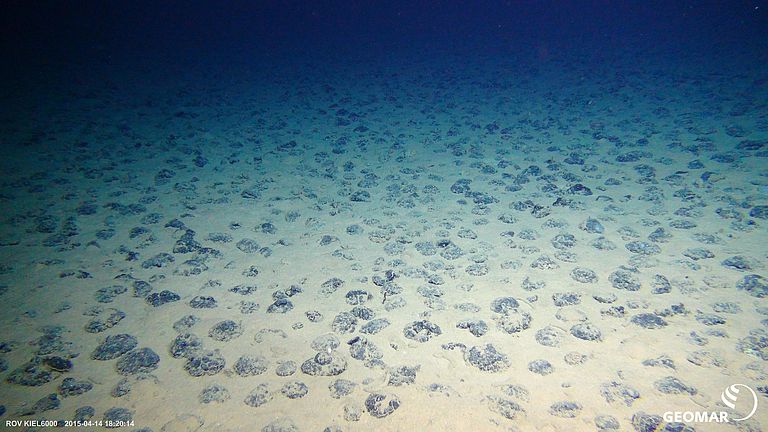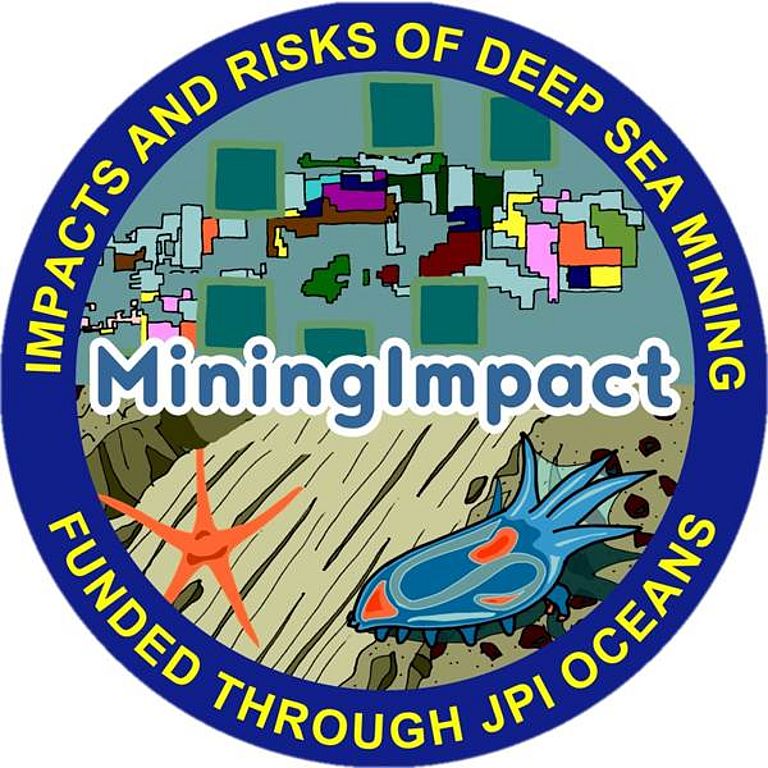Deep-sea Mining: Research on Risks and Environmental Impacts Continues
The 2nd phase of the JPI Oceans project "MiningImpact" has started
The mineral resources in the deep seabed outside of any Exclusive Economic Zones (200 nautical miles zone) are managed by the International Seabed Authority (ISA). According to the United Nations Convention on the Law of the Sea (UNCLOS) they belong to the "heritage of mankind". To date, 20 countries, including several European countries, namely Belgium, Germany, France, United Kingdom, Poland and Russia, have acquired licenses to explore seabed mineral deposits. The largest resource of manganese nodules exists in the Clarion Clipperton Zone (CCZ) in the North-East Pacific between Mexico and Hawaii. At the beginning of the next decade, some of the exploration contracts in the CCZ will expire. Subsequently, deep-sea mining in the Area could begin.
Against this background, scientists from all over Europe have been investigating the ecological consequences of future deep-sea mining in the MiningImpact project since 2015. The results will contribute to the negotiations of ISA’s Mining Code, which will be the international regulatory framework for the extraction of mineral ores from the seafloor. Now, the second phase of the MiningImpact project has kicked off with a meeting of the 32 project partners from 10 countries, including ISA, in Brussels. The project has been presented its objectives and planned activities to international NGOs, industry interested in deep-sea mining, as well as representatives of ministries and members the European Parliament at a public hearing. The new project phase is funded nationally through the Joint Programming Intitiative of Healthy and Productive Seas and Oceans (JPI Oceans) with a total of 11 million euros while another 6 million euros is contributed by the participating research institutions.
"In the first phase, we have greatly improved our fundamental knowledge on the anticipated long-term effects of deep-sea mining. These findings, we want to substantiate now by identifying suitable indicators for ecosystem health and by defining threshold values for harmful effects on the environment. The international scientific community needs to support ISA in implementing the highest possible environmental standards in the Mining Code" says project coordinator Dr. Matthias Haeckel of the GEOMAR Helmholtz Centre for Ocean Research Kiel.
A key component of the second phase of the "MiningImpact" project will be an independent scientific assessment of the environmental impacts generated during an equipment test of the Belgian contractor DEME-GSR in the CCZ. In spring 2019 the company plans to deploy a pre-prototype collector system on the seabed to harvest manganese nodules in an area of approximately 0.1 square kilometres. "At the same time, we will be on site with the German research vessel SONNE to collect independent scientific data on the environmental impact of this first industrial test of a nodule collector. For example, we are interested in constraining how far the sediment cloud produced by the collector operation spreads spatially and how long it remains in the water column until it settles again," explains Dr. Haeckel. This involves deployment of state-of-the-art deep-sea technology, such as the diving robot Kiel 6000, the autonomous underwater vehicle ABYSS and the deep-sea observatory MoLab of GEOMAR.
Simultaneously, the researchers will test how compliance with the future Mining Code could be secured in the deep sea. They will also gain further insights into how marine protected areas should be designed in order to minimize negative effects of industrial mining operations in the deep sea. "International maritime legislation will provide states with the possibility to exploit deep-sea mineral resources. However, now there is still time to help shape the regulatory framework in order to prevent severe adverse effects on Earth's largest habitat. This opportunity we want to take advantage of”, says Dr. Haeckel.
High-res images:
Contact:
Jan Steffen (GEOMAR, Communication and Media), Tel.:+49 0431 600-2811, presse(at)geomar.de





